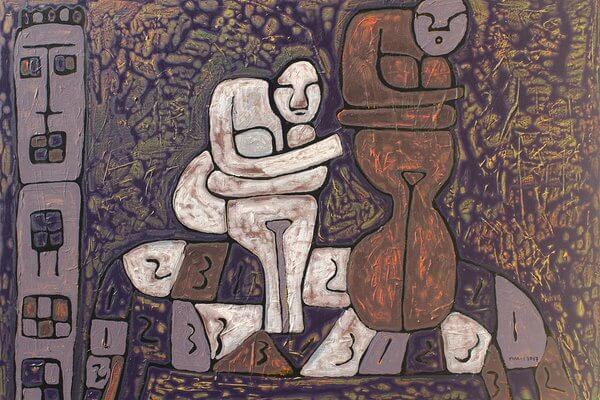Finding Happiness and Balance Through Art
Interview by Jennifer Nelson, WTP Feature Writer
Nguyen Thi Mai is a self-taught, Vietnamese artist focusing on acrylic and lacquer painting. In 2004, she committed to creating art, moving from Singapore to Hanoi, where she took lessons in oil painting at the Art & Lacquer Club. She has participated in the Beijing International Art Biennale, and her artwork has been featured at group exhibitions at the Vietnam Fine Art Association and Ho Chi Minh City Fine Art Association. She has had solo exhibits at the Fine Art Museum of Ho Chi Minh City, l’Espace Hanoi, and the Viet Art Center. Her paintings have also appeared in various art magazines in Europe and the United States.
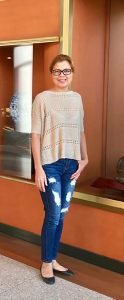
Nelson: Fourteen years ago, you moved to Vietnam, and started working as an artist. How did taking art lessons in Hanoi impact your decision to pursue an art career?
Mai: It was a period of self-discovery for me. I took up painting as I have always had a passing interest in paintings and art. But as I got deeper and deeper into art, I realized that this was something that I was starting to love.
Through art, I was able to achieve balance and harmony within my inner self, and it brought happiness to me, and hopefully, my audience as well.
Nelson: In the past few years, you’ve done four series on animals—horses, roosters, dogs, and cattle. How did you arrive at these animals as your subjects, and what were your reasons for using watercolors on silk for the Bovine series instead of acrylic on canvas?
Mai: If I remember correctly, the first animal that I painted in a big way was the horse. I was attracted by the beauty of this majestic-looking animal. As an artist, I am also inspired by the beauty of the feminine curve and I see a lot of similarity between the curves of a horse and that of the female body. The fact that I was born in the Year of the Horse might have something to do with it.
In the Vietnamese horoscope, 2017 was the Year of the Rooster and I decided to paint some roosters to commemorate the year. That led to the idea to paint all twelve animals of the Vietnamese horoscope, which includes the dog and the ox. But my desire to paint animals is not restricted to the Vietnamese horoscope. I love animals and I believe animals and people are equal—we are all part of the planet Earth.
Acrylic on canvas provides the artwork with rich colors and texture, sometimes giving an appearance not unlike that of stone or mud. Silk, on the other hand, gives a refined and delicate look, conveying a sense of purity and understated elegance. I paint in different media to have different effects and to have variety in my artwork. It was not a conscious decision to do the Bovine series on silk or the Equine series on acrylic – it could well have been the other way around.
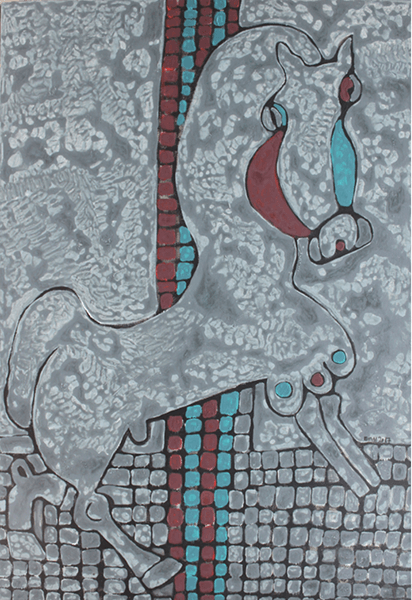
Nelson: You seek balance and harmony on the canvas and within yourself. How does creating art help you achieve these goals?
Mai: Balance and harmony on the canvas are achieved through the use of neutral colors, the balance of vertical lines with horizontal lines, and through the composition of my artwork, which is mostly focused on creating a sense of happiness.
But balance and harmony are more than just seeking visual balance. Neutral and rustic colors represent the traditional and the old—I would like to see a more balanced approach in our society, and not an “economic development at all cost” approach. The composition of my art seeks to convey a sense of optimism, which is what I would like to see more of in contemporary art, which has become rather dark and pessimistic in my opinion.
Balance and harmony, however, are not the final goals—happiness is. I believe art should bring happiness and pleasure to both the artist and the audience. Creating art is an expression of and a channel for my emotions. Art has enabled me to express myself and share my emotions and messages with my audience, and that is happiness for me.
Nelson: Your paintings, such as “Ancient Philosophers” and “Beauty Contest,” can resemble tribal art and old cave paintings. What was your inspiration for these works?
Mai: As a self-taught artist, not constrained by any particular art doctrine, I am especially attracted to the free-flowing spirit of tribal art and old cave paintings. “Ancient Philosophers” is inspired by the traditional and the old. “Beauty Contest” is more a celebration of the beauty of the feminine figures. But in both paintings, I have used a neutral color palette, which is a representation of tradition and the past.
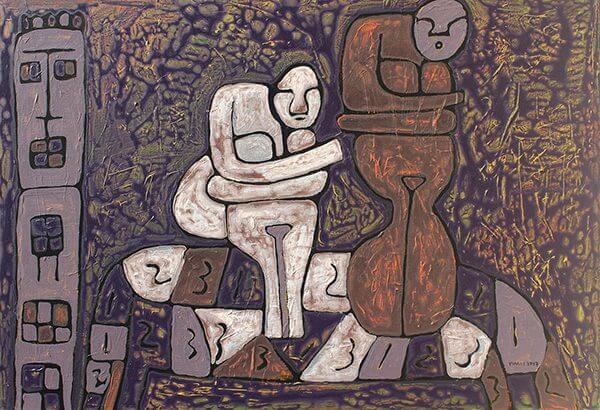
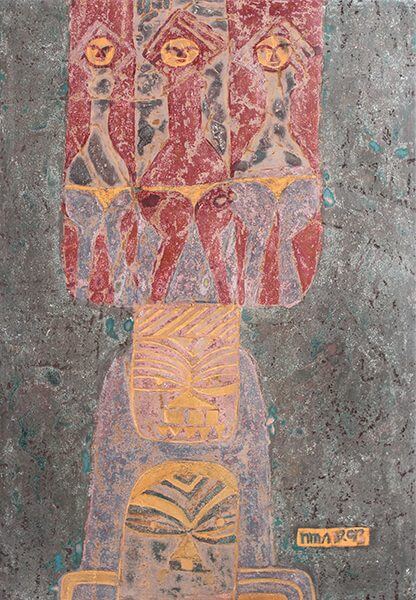
Nelson: What led you to venture, in 2008, into lacquer painting, a traditional Vietnamese art? What are the advantages of this medium, and can you describe your painting technique?
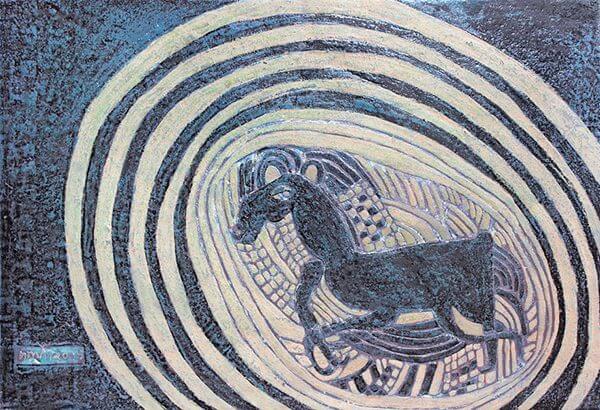
Mai: Although I consider myself as more of an artist who happens to be Vietnamese, rather than a Vietnamese artist, it would be remiss of me not to venture into, and eventually explore, this traditional Vietnamese art form!
Unlike an acrylic painting that could be finished in days, a lacquer painting requires a few months to complete. The first step in lacquer painting would be drawing the outlines onto the wooden boards. Once the outlines are ready, the process then moves on to the application of silver/gold powder and the paints. This is followed by sanding. The process of applying paints and sanding is repeated numerous times, depending on the number of layers that the artist would like to have in the painting.
Additionally, I have given this traditional art form my own unique interpretation by not giving the paintings a final polish. This results in a matte finishing instead of the glossy finishing, which one usually finds in lacquer painting. I call it “unpolished lacquer.” This matte finishing conveys a sense of understated elegance and subtlety, which I find lacking in the more conventional version of lacquer painting.
The advantages of lacquer painting, although differences might be a better word, include the depth given to the painting because of the layering technique mentioned above. The use of silver/gold powder underneath the layers of paints also contributes to the rich texture of lacquer painting.
Besides the depth and texture, the use of silver and gold gives lacquer paintings different hues and tones in colors that cannot be achieved in oil painting or acrylic painting.
Nelson: How did you come to paint on porcelain and silk to create abstract images? Can you talk about its advantages, and effects?
Mai: Porcelain painting was a medium that I dabbled in for a very brief period of time only. It was not something that interested me very much, for the simple reason that I was not in control of the entire creative process. The baking of the product after I have completed the artwork was something I had to rely on others to do.
Silk painting, however, was a medium that I continued to create in long after the initial experiment. What attracted me to silk painting was the surreal and dreamlike effect the material has on the artwork.
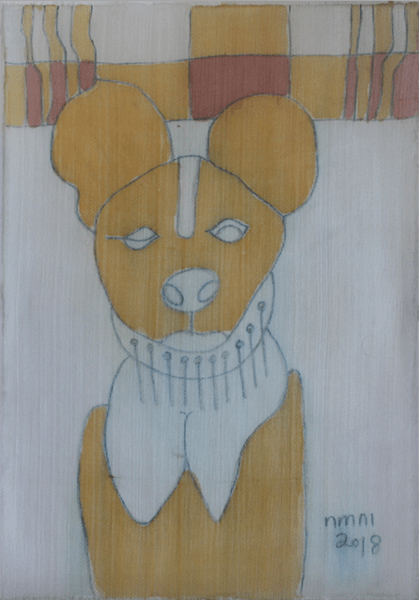
Besides the visual effect, one advantage, or disadvantage depending on how one looks at it, is the stringent meticulousness required. Unlike canvas or wood, the artist cannot just paint over any mistake or smudges made on the silk. The entire piece of fabric must be discarded and the creation process starts anew.
Nelson: How do you see your artwork evolving in the future?
Mai: The current trend in the contemporary art scene is toward conceptual art and installation art. It is a trend that I consciously choose not to follow.
My first priority in creating art is beauty—art should first and foremost be visual rather than cerebral. I would like my audience to look at my art rather than spend too much time pondering over it.
I would like to have balance in my art—balance between the old and the new, balance between tradition and modern. I would like my art to be the link between the past, the current and hopefully, the future.
See Nguyen Thi Mai’s work in WTP Vol. VI #6.
Copyright 2018 Woven Tale Press LLC. All Rights Reserved.

